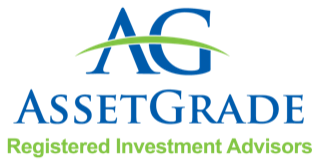
Generating a Paycheck During Retirement
By: Kate Hennessy
You have spent the past 40+ years accumulating assets and saving. You’ve been on autopilot and have enjoyed the ride. You have this number in your head – I want to retire at 65, 67, or 70. But you ask yourself will I have enough money to retire? You fear not having a paycheck in retirement and ask yourself - how can I continue to create income in retirement? Will I be able to sustain my lifestyle in retirement? This lifestyle may include several annual vacations and dining out frequently. Moving from the accumulation phase of your life to the distribution phase can be unsettling. Before moving from an economic producer to a consumer, consider working part-time doing something that you love. Research shows that people tend to be healthier mentally and physically when they keep working in their retirement years. What are your sources of retirement income going to be and how can you create steady income after you retire? The right choice can provide you with sustainable income for life but the wrong choice could leave you uncomfortably short of cash.
Follow these tips to ensure you have the income you need to enjoy your retirement years:
Step 1: Maximize Social Security
Social security earnings may contribute up to 60%- 80% of your income so maximizing them is essential. You can begin to receive Social security checks as early as age 62 but if you do so (before Full Retirement Age of 66, but changing soon to 67), then you will receive a fraction (25-30% less) of what you are entitled to receive. If you are healthy and have either delayed retirement, or have another source of steady income, then I recommend delaying the receipt of your social security benefit. Every year you wait between your Full Retirement Age and 70, Social Security will add an additional 8% to your eventual monthly payout.
Step 2: Spend Safely in Retirement
With a reduced retirement income, you may need to adjust your discretionary spending. However, you will still be able to enjoy life if you pick and maintain a sustainable withdrawal rate. Some financial planners recommend the “4 percent rule.” The rule maintains that you should withdraw 4% of your investable assets the first year, then increase it each year to account for inflation. Some critics believe this rule is too high and may cause people to run out of money, given current low interest rates. An alternative and more conservative method to determine a withdrawal rate is the “Spend Safely in Retirement” method, which recommends using the annual withdrawal rates based on the IRS required minimum distribution rules[1] . Unlike the 4% rule, this method poses little risk of running out of money and can result in income varying from year to year. The key is you need to determine how you want to spend your money and budget. Once you’ve determined your budget and withdrawal rate, be thoughtful about taxes when choosing what “bucket” to withdraw from, three common buckets for most retirees are tax-deferred assets (401k, IRAs), taxable (brokerage accounts), and after-tax accounts (Roth IRAs). The calculations can be complicated but are worthwhile, for example a married couple will only pay a 12% federal tax rate up to $80,250 in taxable income. This is an area where many people should consider working with a financial advisor.
Step 3: Stay Invested
Many retirees are tempted to move their money into “safe” investments, like bonds, CDs and savings accounts. They fear a market downturn in retirement and the time it will take to re-coup their losses. The opportunity cost of holding too much cash is that inflation and taxes will eat away its purchasing power. Purchasing power is the amount of a good or service that can be purchased with a unit of currency, such as a dollar. How do you determine the right amount of assets you should have invested in the stock market in retirement? You need to take a thoughtful approach to how much total return you need to generate on your investments while managing your risk. It’s not as simple as the good old days when you could take “100 minus your age = your equity/fixed income allocation.” At AssetGrade, we use a sophisticated financial planning tool that enables us to use a projected return for our client’s portfolios, manage their risk, and determine their probability of reaching their retirement goals.
In a nutshell, a “paycheck” can be generated in retirement – if you make smart choices and stay invested.

